Unusual activity of the Earth's Magnetosphere was observed for the second time in 10 days and was reported today as a "minor" G1 geomagnetic storm.
I noticed a bit of activity in the early morning as the image below illustrates, but things calmed down for most of the rest of the day. Check out the "movie" of the day's activity to see the weird bumpy thing (technical term) move on just the one side that's in the area denoted below. That was weird,, check it out.
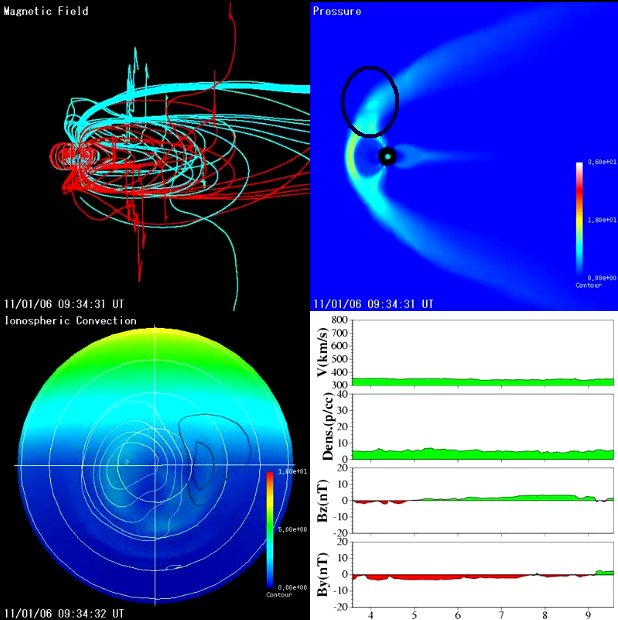
Then, things started heating up around 1700, or so.
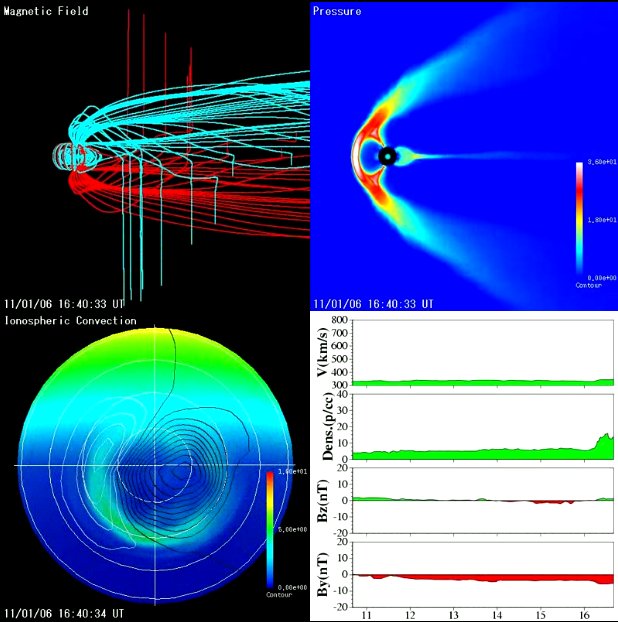
The NOAA Space Weather Prediction Center began issuing onset warnings 2011 Jan 06 2210 UTC (approx 4:00 pm CST) with a "Geomagnetic K-index of 4 expected."
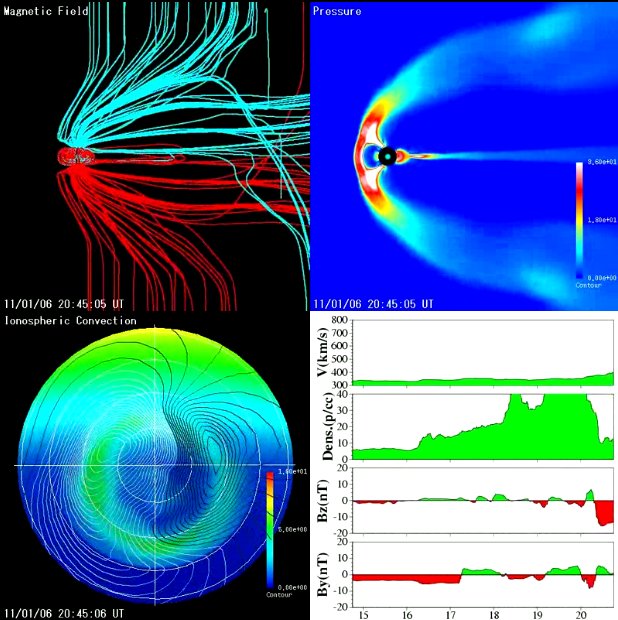
37 minutes later, the K-index of 4 was reached.
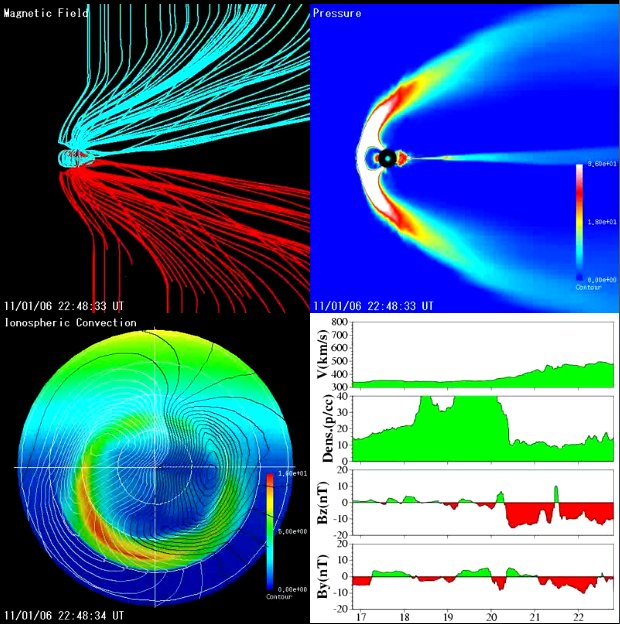
20 minutes later at 2011 Jan 06 2305 UTC, SWPC issued a warning of the onset of a G1 - Minor storm with a Geomagnetic K-index of 5 expected. The warning was in effect until 2011 Jan 07 1600 (10 am CST)
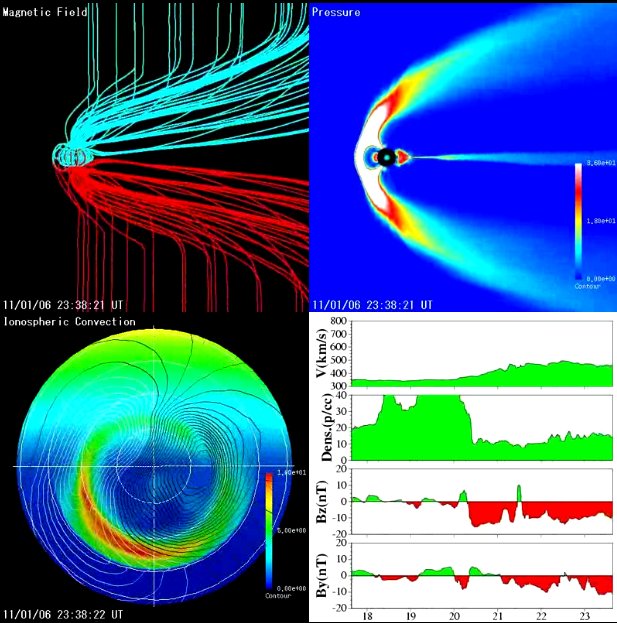
The above images are from the archives of the National Institute of Information and Communications Technology (NiCT) website of the Real-time Magnetosphere Simulation These Real-time images of the earth's magnetosphere are reproduced by the real-time magnetosphere simulation system. The official "movie" of today's activity can be found here
But, you can also see the combination of the 6th and 7th UTC at MrTheWatcher2's Channel here.
In checking the Plasma Temperature and Density at Geostationary Orbit and AE Index, which can be found here, you can see the two data charts below...
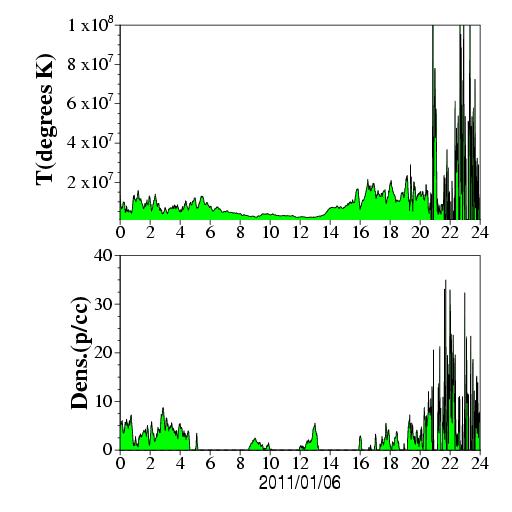
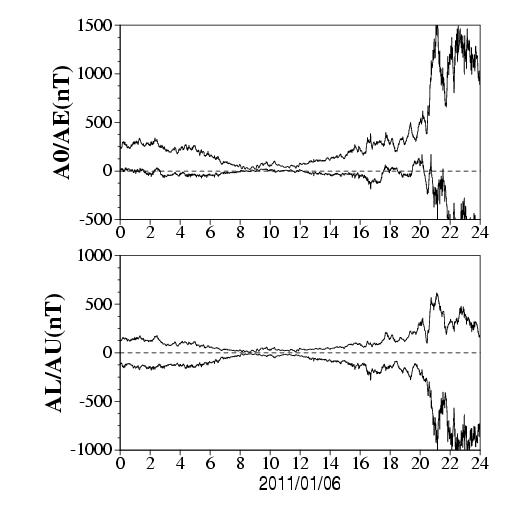
spaceweather.com has reported " As expected, a solar wind stream hit Earth's magnetic field during the early hours of Jan. 7th. The impact sparked a G1-class (Kp=5) geomagnetic storm and bright auroras around the Arctic Circle."
It will be interesting to see the auroral fields and effects, which can be observed here (Go - Images -> Showing -> Drop down - Auroras) The Kiruna All-Sky camera (same link) is always interesting.
The storm certainly showed up in the NOAA K index chart, as seen below: And it hasn't calmed all the way down since.
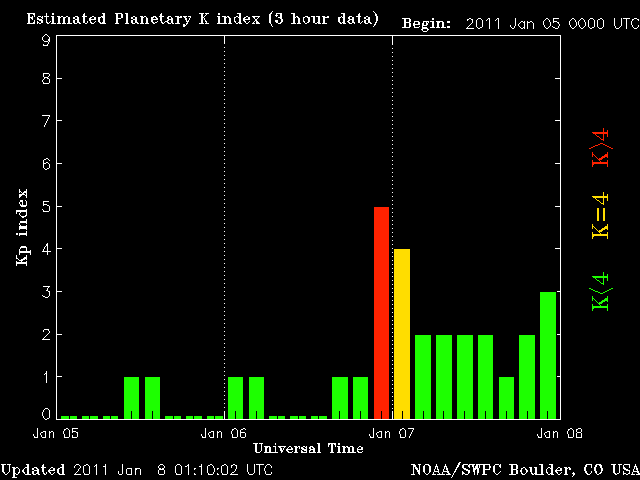
The entire satellite environment reflected the hit, as seen below.

Shockplotter is a project of the University of Maryland which uses near-real time solar wind and other data from the Charge, Element, Isotope Analysis System (CELIAS) experiment on SOHO. SOHO (Solar Heliospheric Observatory) is a joint European Space Agency, United States National Aeronautics and Space Administration mission. It also uses data from the Mass Time-of-Flight spectrometer (MTOF), and PM sensor on the SOHO spacecraft. The Shockplotter project uses this data to attempt to identify possible interplanetary shocks. Shockplotter's report is below...but this event was not identified on the Shockplotter website as of this writing.
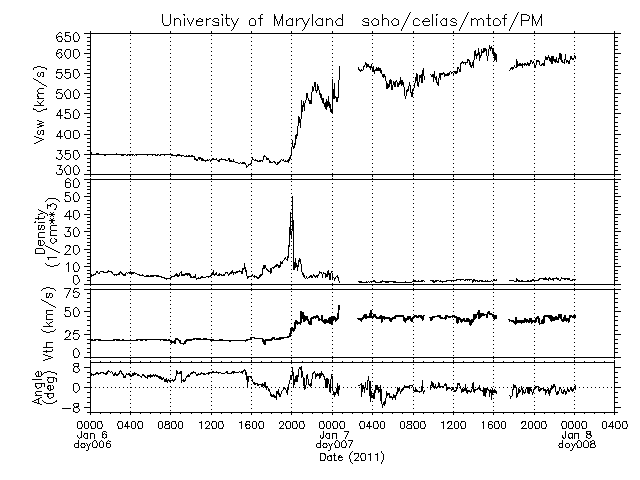
As of this writing at approaching 01/08/2011 03:00:00 UT, there have been no new alerts. However, a peek at the Real-time Magnetosphere Simulator shows that it's not all calm yet.
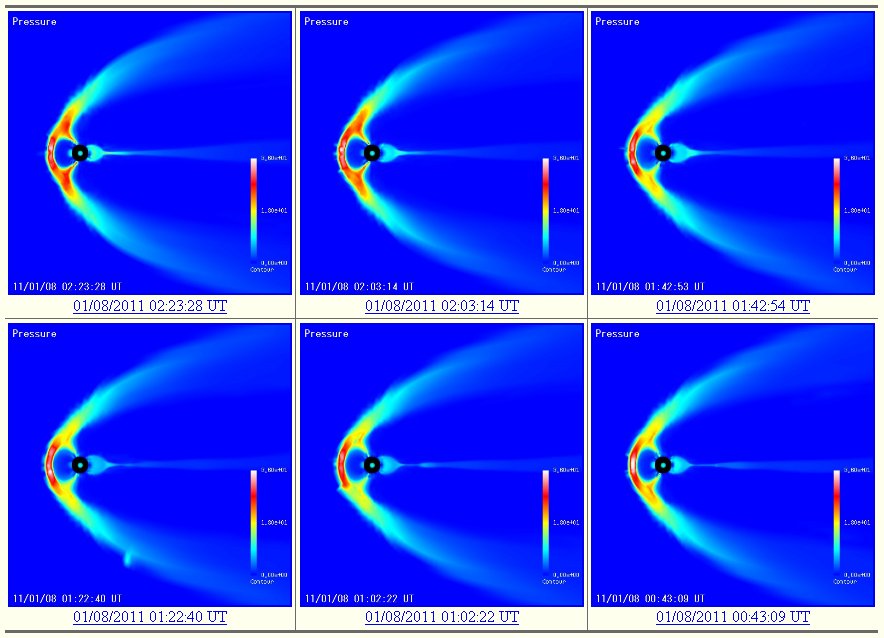
There is still certainly enough going on out there lately to warrant continued observation.

Further ordinary observations of the possibly probable pending general all-round smack down of the planet will be ongoing, and respectfully reported as needed.
Lorie Kramer - Houston, TX
seektress@seektress.info